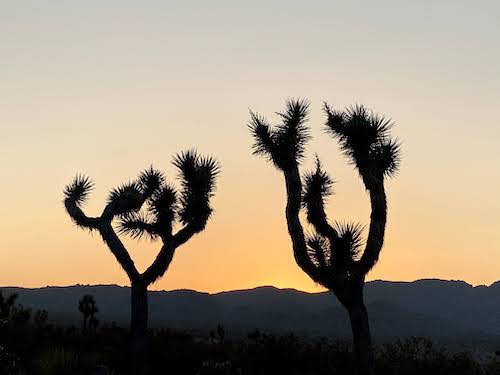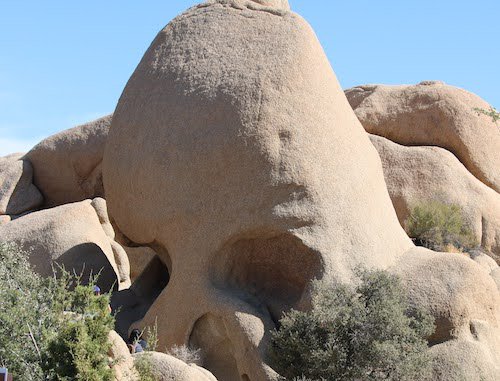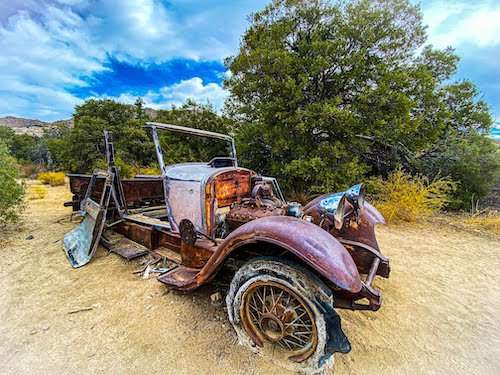Dreaming of Travel: Joshua Tree National Park
Published on November 03, 2021 - Updated on February 24, 2022
Located in Southern California, Joshua Tree is one of America's most unique National Parks.
Located under 3 hours away from the hustle and bustle of Los Angeles sits the quiet, nearly untouched desert that makes up Joshua Tree National Park. Joshua Tree makes an excellent weekend getaway if you want to unwind. There are hiking trails, scenic drives, boulders to climb, and funky little towns to explore. Plan on staying after dark to enjoy one of the darkest skies in the world; you can see more stars than you can imagine, and often, you can spot The Milky Way.
Joshua Tree National Park gets its name from the unique Joshua Trees that grow here. Early settlers named the trees because they reminded them of Biblical Joshua with his hands outstretched to heaven. It is also a mecca for rock climbers and boulderers.
The weather in Joshua Tree can be extreme, so you’ll want to come prepared. In the summer, temperatures can reach well over 100 degrees, and there is little to no shade. In the winter, temperatures can plummet below freezing. The best times to visit Joshua Tree National Park are spring and fall. Even in the mild seasons, come prepared for the weather. I suggest always bringing a hat and clothing to protect you from the sun. It will be cold at night, so bring warm clothes even in the spring. Always carry extra water with you in Joshua Tree. There aren’t many places in the park with access to water.

This is the desert, and with it come snakes and other creepy crawlies, including spiders and scorpions. There are 26 different kinds of snakes in the park - 7 different types of rattlesnakes. Always wear closed-toed shoes in the park. Teach kids not to lift rocks or put their hands in crevasses. Stay on trails and be aware of your surroundings. Various other animals live in the park, including tortoises, jackrabbits, roadrunners, and numerous birds.
Hiking
Joshua Tree National Park has excellent hiking trails! Before hiking in the park, be sure to come prepared with sun protection (sunscreen, hat, etc.) and plenty of water. As a rule, when hiking in the park, head back once you consume half of your water, even if you haven’t completed the hike.
Wall Street Mill
An excellent hike for families, the loop is just about 2 miles and is very flat and easy to walk. There is plenty to see on this hike to keep everyone entertained. There are remains of an old homestead, a windmill, numerous old cars, an old mill, and even the marker to a gunfight between the property owners. The trickiest part of this trail is finding it at the very beginning. It’s sandy and hard to see. Park at the Barker Dam parking lot and head to the right. Just keep walking straight, and you should begin to see the trail materialize. If the Barker Dam parking lot is full, keep driving, and there will be another small lot. If you park here, the path will start to the right of the parking lot. There are bathrooms at the Barker Dam parking lot.
Barker Dam
Barker Dam is one of the most popular trails in the park. The parking area is called Barker Dam parking lot, and there are restrooms. This loop hike is just over one mile. It gets busy, and there is no shade, so definitely start this hike early in the day. Along this loop, be on the lookout for bighorn sheep as they frequent the rocks above the hike. You’ll walk to an old dam that will be dry most of the year but may have some water if it has recently rained. Be careful with young kids as you leave the dam site; a small part of the hike has a drop-off as you leave the dam and head around the loop. It’s manageable, but just be aware of it. Lovely views and petroglyphs area treats along the way. The petroglyphs on this hike are infamous. A Disney movie was filmed here in 1961, and unfortunately, the film crew wanted the petroglyphs to stand out, so they painted over some of the original shapes to make them brighter! There are still some originals, though it’s a good lesson to talk to kids about preserving history and nature.
Ryan Mountain
Ryan Mountain is a 3 mile out and back hike that rates as moderate. There are a few steep areas, but the trail is well marked. The path is dirt with a few stone steps. It’s safe for kids but is definitely the most difficult of all the hikes in the park. Start early in the day to avoid being out in the heat of the day. There is little shade along the hike. At the top, the reward is panoramic views over the park!
Cholla Garden
Cholla Garden is more of a walk than a hike, but you definitely should make time to do it! The walk is on a wooden boardwalk and is .25 miles. It makes a loop through a grove of Cholla Cactus. Cholla Cactus (say it like choya), are often called teddy bear cactus because they look fuzzy. Make no mistake, these are sharp and will attach to your skin and your clothes. Be sure to keep kids on the boardwalk and warn them to keep their hands and bodies away from the cactus. If there does happen to be a mishap, there is a first aid kid located at the front of the garden that has tweezers to remove the needles. The cholla garden is magical at sunrise as the “fuzzy” cacti catch the glowing light of the sun.
Bouldering
Joshua Tree has incredible rock formations throughout the park. Most of them have some sort of walkable trail around them. Kids and adults alike will love climbing and scrambling over the rock formations.
Skull Rock

Skull Rock is one of the most famous rock formations in Joshua Tree National Park. One look and you can easily see where this rock got its name! You can see it by driving by, but it’s definitely more fun to park along the road and walk around the rocks. Located along East-West Road, there is a parking lot across from the formation. You can also walk to Skull Rock from the jumbo rocks’ campground.
Cap Rock
Cap Rock got its name because it looks like a baseball cap is sitting on top of the rocks. There is a walkable loop here that takes you around some of the surrounding structures. There are also restrooms, BBQs and picnic tables available. Cap Rock is located just before the turn-off to Keys View.
Driving around
You’ll want to be sure to drive through Joshua Tree National Park. There is so much to see. The Park is large, and you can spend the better part of the day just driving around, with a few stops to walk around some of the small nature trails. There are also numerous pull-outs with informative plaques teaching you about the history and environment of the park.
Drive about 20 minutes on Park Boulevard from the West Entrance to get to Keys View. Here you will find a large parking lot and a paved wheelchair-accessible path that leads to one of the most iconic views in the park. You can look down over Coachella Valley, the San Andreas Fault, and sometimes even Mexico!
You can also drive all of East-West Road that will take you across the park from the Joshua Tree Entrance to 29 Palms. This drive will take you past some of the most famous rock formations in the park.
Pinto Basin Road leads to the South Entrance and the Cholla Garden. As you drive along Pinto Basin Road, be on the lookout for signs that alert you to a notable change in the ecosystem. Along this road, two deserts meet. The Mojave Desert makes up the North part of the park, where you’ll find the Joshua Trees and boulders, and the Colorado desert comprises the southern part of the park where you see more low-lying sagebrush and the cholla cactus.

Where to stay
Five campgrounds accept reservations inside the park. Three additional campgrounds are first-come, first-served. All campgrounds fill up quickly, so you need to plan ahead. There is free dispersed camping on BLM land south of the park, just past the Cottonwood Entrance.
If you aren’t into camping, you still need to plan for your visit to the park. Hotels can be found in Joshua Tree or 29 Palms but are very limited. There are numerous Airbnb properties nearby, but they also book up quickly.
Food
There is no food service in the park and there is limited food nearby. The towns of Joshua Tree and 29 Palms have a few restaurants and a large Walmart nearby. I recommend going to Walmart and getting snacks, extra water and groceries.
Joshua Tree National Park is a wonderful opportunity to get out and explore in different ways with your family. All ages will be amazed with the park's unique character.
Does your family have a favorite road trip destination? Please reach out to team@happyly.com and tell us about it, or share your highlights on Instagram @gethappyly for a chance to be featured!
Explore more of our Dreaming of Travel series in a music lover’s paradise like Memphis, or find your happy place on Bear Lake: An Adventurer’s Oasis. If you’d prefer, Make Nature Your Focus in Harper’s Ferry, Plan Your Next Adventure in Savannah, Explore Grand Teton or Yellowstone, Dream about a Tubing Adventure in Salida, Colorado.
Enjoying our content? Download the happyly app, the country’s only mobile-first family activity planning app, for fast access to all of our blog content, favorite activities, and expertly curated days, both locally and in many communities and travel destinations across the country.